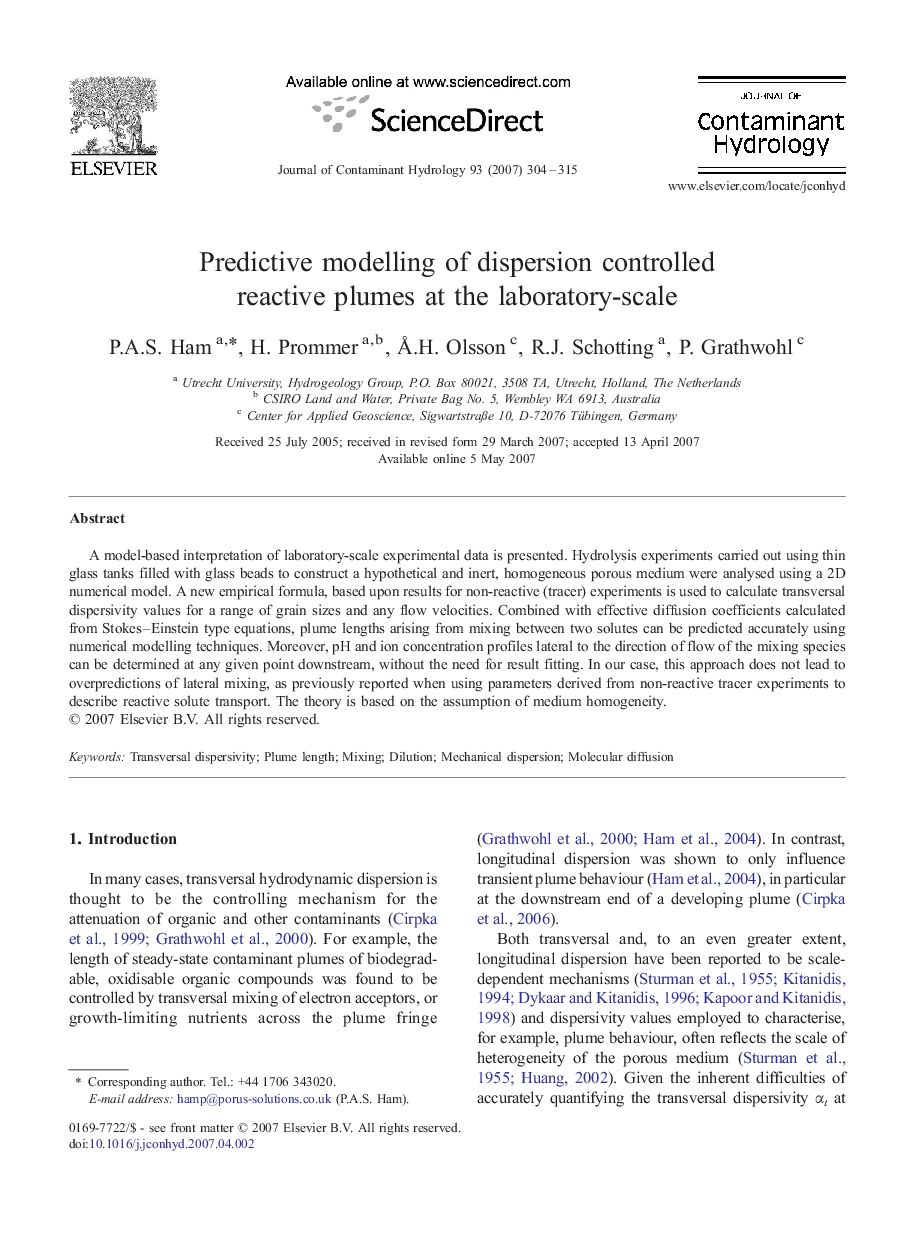| Article ID | Journal | Published Year | Pages | File Type |
|---|---|---|---|---|
| 4547458 | Journal of Contaminant Hydrology | 2007 | 12 Pages |
Abstract
A model-based interpretation of laboratory-scale experimental data is presented. Hydrolysis experiments carried out using thin glass tanks filled with glass beads to construct a hypothetical and inert, homogeneous porous medium were analysed using a 2D numerical model. A new empirical formula, based upon results for non-reactive (tracer) experiments is used to calculate transversal dispersivity values for a range of grain sizes and any flow velocities. Combined with effective diffusion coefficients calculated from Stokes-Einstein type equations, plume lengths arising from mixing between two solutes can be predicted accurately using numerical modelling techniques. Moreover, pH and ion concentration profiles lateral to the direction of flow of the mixing species can be determined at any given point downstream, without the need for result fitting. In our case, this approach does not lead to overpredictions of lateral mixing, as previously reported when using parameters derived from non-reactive tracer experiments to describe reactive solute transport. The theory is based on the assumption of medium homogeneity.
Related Topics
Physical Sciences and Engineering
Earth and Planetary Sciences
Earth-Surface Processes
Authors
P.A.S. Ham, H. Prommer, Ã
.H. Olsson, R.J. Schotting, P. Grathwohl,
